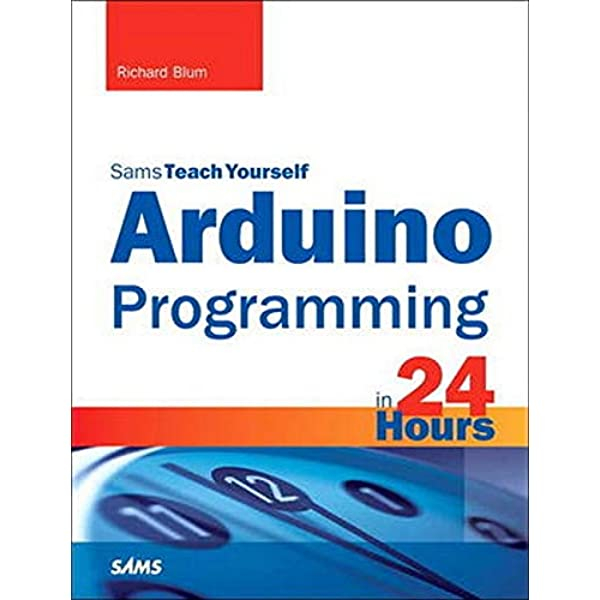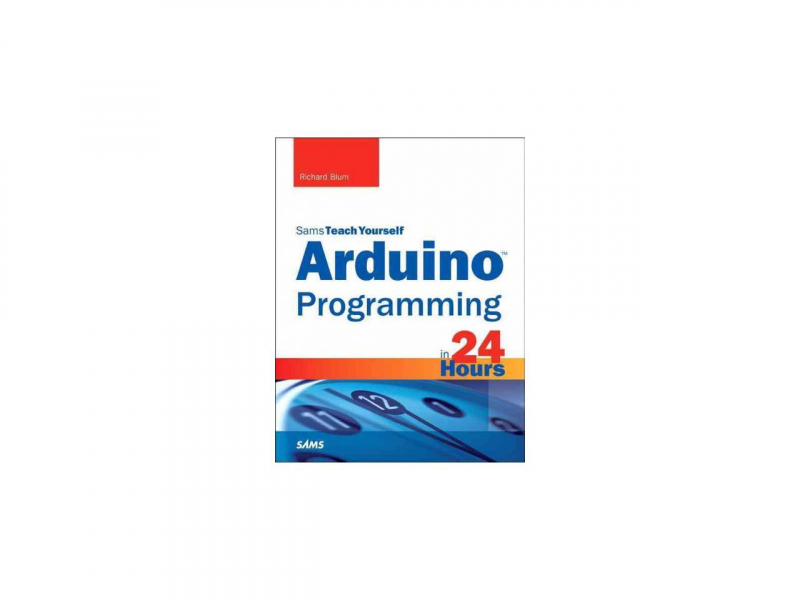Arduino Programming in 24 Hours

Richard Blum has over 25 years of experience in the IT sector as a network and systems administrator, administering Microsoft, UNIX, Linux, and Novell servers for a network of over 3,500 users. Rich has written several programming books, including Teach Yourself Python Programming for the Raspberry Pi in 24 Hours (coauthored with Christine Bresnahan, 2013, Sams Publishing), Linux Command Line and Shell Scripting Bible (coauthored with Christine Bresnahan, 2011, Wiley), Professional Linux Programming (coauthored with Jon Masters, 2007, Wiley), and Professional Assembly Language (2005, Wrox).
Arduino Programming in 24 Hours teaches you C programming on Arduino in just 24 one-hour sessions, so you can start developing inspired "DIY" hardware projects of your own! You'll stroll through everything from setting up your programming environment to learning C syntax and features, connecting your Arduino, and executing full-fledged prototyping using this book's clear, step-by-step methodology. Every practical lesson and example builds on what you've already learned, providing you with a solid foundation for real-world success!
- The most frequent Arduino programming tasks are methodically walked through in step-by-step instructions.
- Quizzes at the end of each chapter allow you to put your knowledge to the test.
- By the way, the discussion notes give interesting information.
- What Did You Know? Tips provide advise or demonstrate easier ways to complete tasks.
- Take Care! Cautions warn you of potential difficulties and provide advise on how to avoid them.
Discover how to...
- Purchase the appropriate Arduino hardware and accessories for your requirements.
- Install the Arduino IDE and connect it to your Arduino.
- Create, develop, upload, and run your first Arduino program in no time.
- Understand C grammar, decision making, strings, data structures, and functions.
- To work with memory, use pointers—and avoid frequent pitfalls.
- Data can be saved on your Arduino's EEPROM or an external SD card.
- Make use of existing hardware libraries or develop your own.
- Send output and read input from analog or digital devices
- In both software and hardware, create and manage interruptions.
- Use the SPI interface and the I2C protocol to communicate with devices.
- Use analog and digital sensors.
- Create Arduino C code to control motors.
- Connect your Arduino to an LCD and program the output.
- Install an Ethernet shield, set up an Ethernet connection, and create networking applications.
- Make prototyping settings, employ prototyping shields, and connect electronics to your Arduino.
Author: Richard Blum
Link to buy: https://www.amazon.com/gp/product/0672337126/
Ratings: 4.5 out of 5 stars (from 268 reviews)
Best Sellers Rank: #367,904 in Books
#84 in C Programming Language
#119 in Single Board Computers (Books)
#143 in Robotics (Books)











